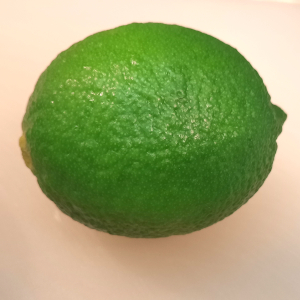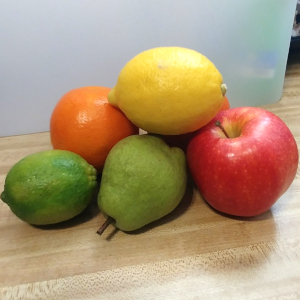 Here’s the 411 on limes and how to store them longer because there are few things that maybe you didn’t know. These little green balls of awesomeness are small, usually around 1 to 2 inches in diameter. They’ve got that vibrant green color that screams freshness. The skin can be thin but packs a punch in aroma when you give it a little squeeze. When you bite into a lime, get ready for a flavor explosion. It’s that perfect mix of tangy and a tad sweet. The juice is what makes your taste buds do a happy dance.
Here’s the 411 on limes and how to store them longer because there are few things that maybe you didn’t know. These little green balls of awesomeness are small, usually around 1 to 2 inches in diameter. They’ve got that vibrant green color that screams freshness. The skin can be thin but packs a punch in aroma when you give it a little squeeze. When you bite into a lime, get ready for a flavor explosion. It’s that perfect mix of tangy and a tad sweet. The juice is what makes your taste buds do a happy dance.
Where are Limes From?
Typically here in the United States, we most commonly see Persian Limes and less commonly are Key Limes. Diving down, limes are globetrotters, you know? They’re grown in tropical and subtropical regions. Mexico, India, and Egypt are some heavy hitters in the lime game. But you can find these little bad boys in many places with the right climate. However, the lime’s roots can be traced back to Southeast Asia. They’ve been growing there for centuries, soaking up the sun and becoming the citrus sensation we know today. Limes made their way to Europe during the Crusades, and from there, they spread like wildfire.
Health Benefits?
Limes belong to the citrus family, and they’re close kin to lemons, oranges, and grapefruits. It’s like a citrus family reunion in your fruit bowl. Back in the day, British sailors used to carry limes on long sea voyages to prevent scurvy. That’s why they were called “limeys.” Scurvy is a disease caused by a deficiency of Vitamin C (ascorbic acid), and limes, being a rich source of this essential vitamin, became a historical remedy for sailors and others at risk of scurvy.
Not only do you get a Vitamin C boost, but the high acidity helps break down your food for better digestion. Adding a little lime juice to your food or water during meal times is a great way to add them to your diet. Limes are low in calories and high in fiber. Including them in your diet can help with weight management and contribute to a feeling of fullness.
Antioxidants like Vitamin C, but also flavonoids, limonoids, and carotenoids like beta-carotene and lutein that add to that antioxidant arsenal. These compounds play a crucial role in protecting your cells from damage caused by free radicals. I actually will cut a lime in half and apply topically to my skin for a healthier complexion.
Storing Your Limes
First and foremost, my produce is washed as soon as I bring it home from the market and that includes limes. Limes and many other citrus fruits often have a thin layer of wax applied to them not only for appearance, but it helps preserve them and is generally considered safe for consumption. However, if you prefer to remove it (as I do), a good wash under running water and a gentle scrub with a brush should do the trick. I have the lime now, it no longer needs to be shiny and protected for the rigorous journey to my home.
I normally store my limes in the fridge. The cooler air slows the ripening process so they stay longer. I’ve kept them on my counter too. The important thing is that whether you store limes whole on the counter or in the fridge, they should not be an air tight container. There should be air circulation to prevent moisture buildup and mold.
For individual limes, especially if you’ve cut into one and plan to use it later, wrapping it in plastic helps to keep it from drying out. It also minimizes exposure to air, preserving its freshness.
Limes release ethylene gas, which can accelerate the ripening of certain fruits. Keep them separate from ethylene-sensitive produce like apples, bananas, and avocados. Of course the revers is true as well. If you have some bananas you want to ripen faster, store them close to each other or put them in a bag.
Freezing Limes
Freezing limes is a solid move, especially if you want to keep that zesty goodness on hand. Here’s a couple of ways to freeze them. Clean your limes thoroughly, pop ’em in a ziplock bag or wrap them in plastic wrap, and toss them in the freezer. Boom, frozen limes ready to roll. You can use these for zesting or garnishing drinks.
Color Change?
When freezing Limes, these little green warriors stay true to their vibrant hue. When you freeze ’em, they might get a bit firmer, but that green goodness remains intact. You’re not gonna open your freezer to find some weird-colored limes. They’re still rocking that fresh, green look, ready to add a pop of color and flavor to whatever you’re whipping up.
Thawing
To thaw, let the limes sit at room temperature for a bit. About 20-30 minutes should do the trick. Roll the lime on the counter before you cut into it. This helps break down the cell walls and makes juicing easier. Slice and squeeze as you normally would. The thawed lime should give you juice like it’s fresh off the tree. Once thawed, try to use them up sooner rather than later. They won’t stay as firm as fresh limes, but the flavor is still on point.
Freezing Zest and Juice
For freezing zest and juice, you can make some lime zest and juice cubes. Zest the limes first. Squeeze the juice out of your limes. Pour the juice into ice cube trays. and pack the zest in 1 tsp measurements. Freeze the tray. Now you’ve got lime zest and juice cubes. Perfect for adding a splash of lime to your drinks or recipes.
As with any frozen foods, you should be labeling everything. You don’t want to play a guessing game when you pull stuff out of the freezer.
If you’re into cocktails or mocktails, those lime juice cubes are a game-changer. Drop ’em in and watch the magic happen.
Storing Tips
Place limes in the produce drawer of your fridge. It’s designed to maintain optimal humidity for fruits and veggies. Regularly inspect your limes for signs of spoilage. If you spot any mold or soft spots, it’s time to use them up or toss them out. If you plan to use your limes within a week or so, you can store them at room temperature. Just keep them away from direct sunlight to avoid premature ripening.
Remember, keeping limes fresh is not only about maintaining their flavor but also about maximizing their nutritional value until you can ultimately eat them. Making them last longer helps you financially but also makes sure your limes are available when you need them.


